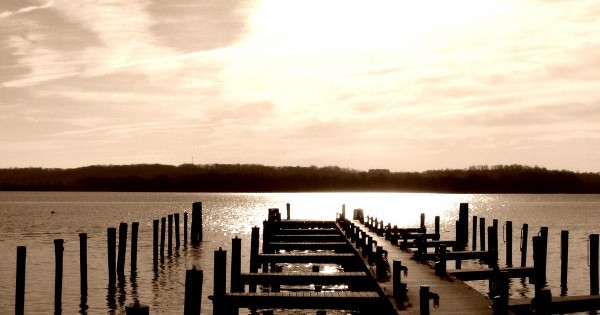
The shipworm wants wet wood. This want works itself out in the hulls of wooden boats, wooden wharfs and piers, wooden pilings, and wooden railroad trestles. Not to mention driftwood—drifting logs and trees. When wooden boats were synonymous with shipping, the shipworm was the bane of the maritime trade. It caused docks to collapse, vessels to sink. It’s still the bane of wood-dependent waterfronts worldwide. It’s also the bane of searchers for underwater wrecks, since shipworms tunnel wrecked wooden boats to bits.
The shipworm is not a worm. It’s a mollusk, related to clams, and it requires saltwater. The most common species is Teredo navalis, a creature with a bivalve clamshell in front, a long, soft, wormy-looking middle part called the mantel, and at the back, two siphons, one for taking in, the other for squirting out. Its frontal clamshell acts as a drill bit to bore its tunnel in wood. The body then makes a calcium-containing coating for the tunnel. There it lives its life. These tunnels riddle saltwater-soaked wood until an infested pier shown at the stub end looks like a sponge. (This is about eating your home and having it too.) Teredo navalis grows to a usual length of seven to 10 inches and reproduces prodigiously. How so? The male releases gametes into the water and the female takes them in through her ingoing siphon. During her lifespan of one to three years she produces a million eggs. The larvae hatch in her mantel cavity.
The wood digestion process is aided by endosymbiotic bacteria (the kind that keep house inside another), which digest cellulose and fix nitrogen for their host home.
If we are looking for crossroads of natural and human history, we can start with the shipworm. In 1588 shipworms helped the British sink the thoroughly Teredo-tunneled vessels of the Spanish Armada. From 1919 to 1921 wharf collapses became routine in San Francisco Bay. Shipworms gave us the idea of creosoting piers (bad for the environment but not that bad for shipworms) and copper-skinning wooden hulls and piers. Shipworms, no doubt, drove the maritime shift from wood to concrete and steel.
My home, Seattle, a maritime city, lies on Puget Sound, a long arm of the sea. To this day the wharfs and docks of Seattle’s downtown waterfront crowd along the saltwater of Elliott Bay. A search for stories on Teredo in the archives of the Seattle Times, circa 1900, reveals a war in progress against this “marine insect,” this “enemy of harbor improvements,” this “terror of the dock builder.” Seattle’s waterfront was wooden. Vessels brought exotic imports, including Teredo navalis. Railroad tracks edged the shore on wooden trestles, their piles driven into seawater. Despite prosperity, shipworms threatened the infrastructure of the waterfront. Maintenance was continuous and costly, and wharves were known to collapse.
The infrastructural debates that riddle the past of our fair city—about whether and where to build the ship canal, whether and how to fill the tideflats, whether and how to take down the hills—often contain the word Teredo.
Such a small, busy sea creature, minding its own business, boring into our own.

